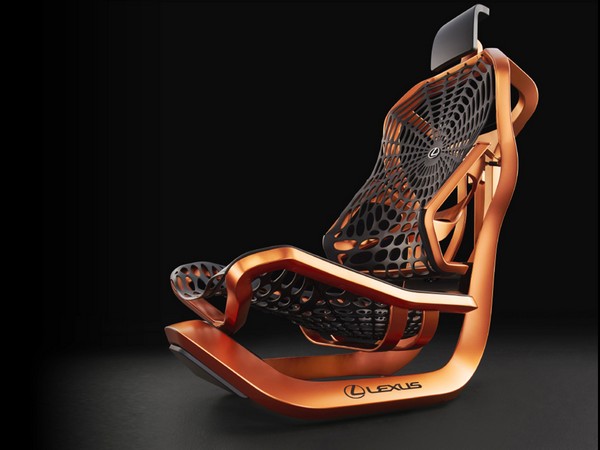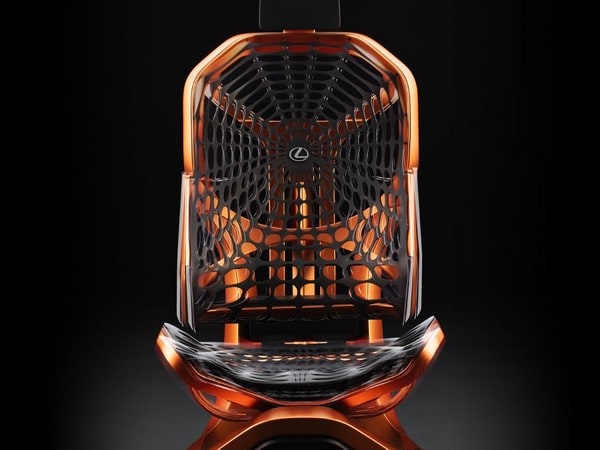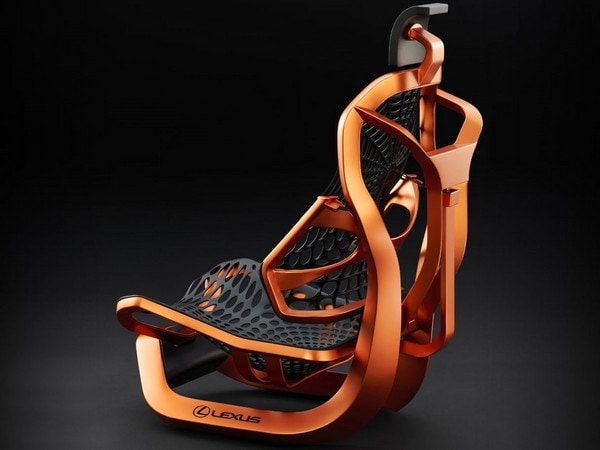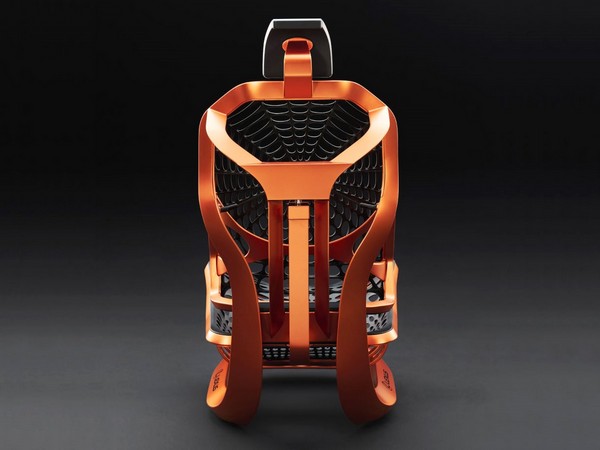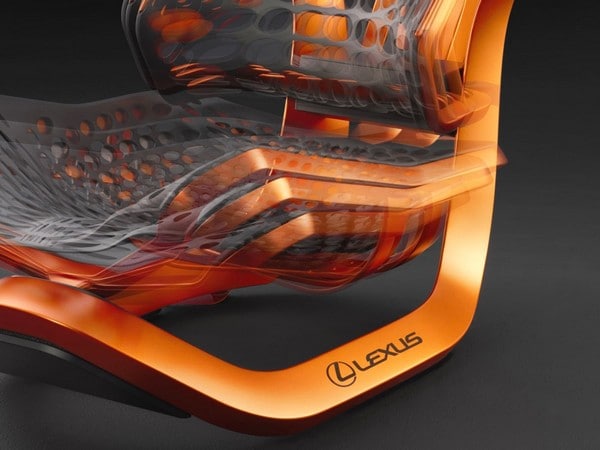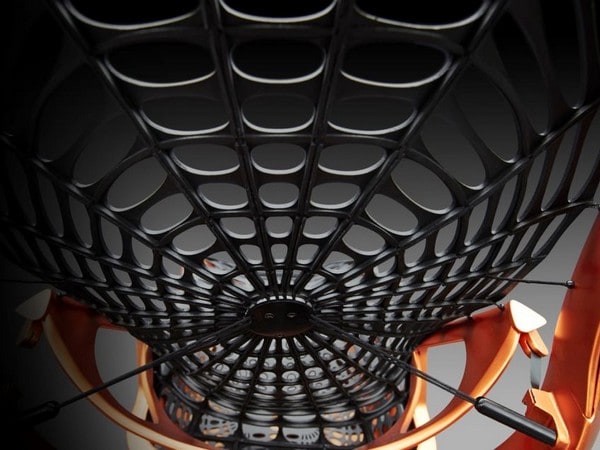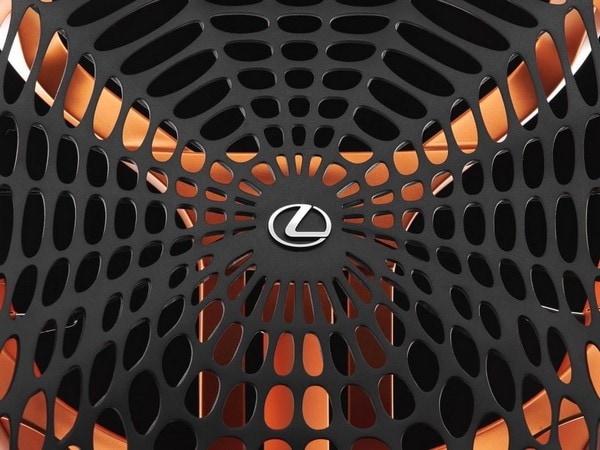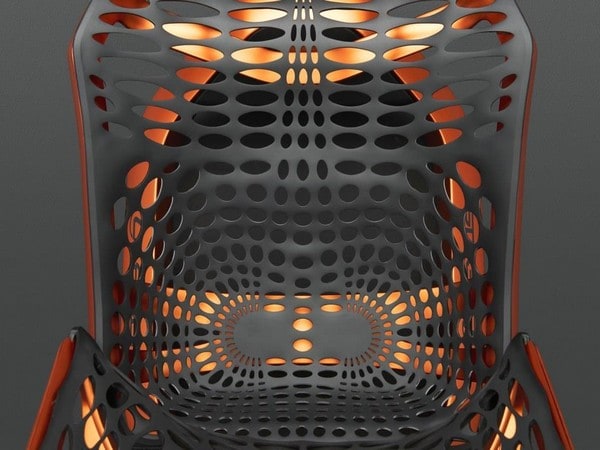The Lexus Kinetic Seat Concept previews a new design the automaker is currently evaluating for potential future production applications. In addition to its lightweight overall construction, Lexus says its Kinetic Seat offers a number of tangible benefits highlighted by the ability to mimic the motion of the human spine. This helps to stabilize the position of the driver’s head to provide a steadier field of vision and lessen long-term fatigue.
The key to the Kinetic Seat is its seat cushion and back rest that are capable of independently moving in response to an occupant’s weight as well as to external g forces. Both are covered in a trick spider-web pattern net upholstery that’s firm but still flexible enough to fully conform to a body shape to distribute the load in a way that promotes long-term comfort. Lexus says the center of the back rest on this skeletal-style bucket is positioned at shoulder blade height to induce rotational movement of the chest around the seat’s axis.
Also: Kelley Blue Book Best Buy Awards of 2016
There’s a sustainability story here, as well. The individual strand elements on the back of the Kinetic Seat Concept are made from an environmentally-friendly synthetic spider silk material called QMONOS. Developed by the Japanese company Spiber, Inc to replace conventional petroleum-derived materials, this protein-based alternative is created from a microbial fermentation process and then spun into a material that’s exceptionally durable and offers superior shock-absorbing qualities. While Lexus is quick to admit the Kinetic Seat is still in the early developmental stage, the division said dynamic testing on the experimental seat already had been conducted at the Nürburgring racing circuit.
More Lexus News…
2018 Lexus LC500 Coupe unveiled
